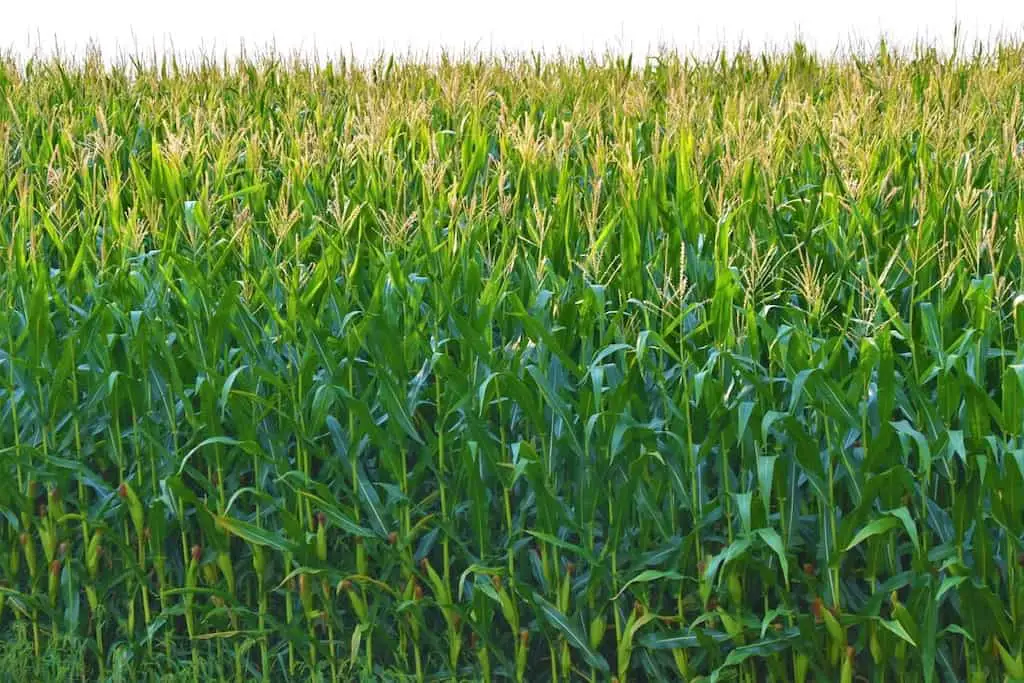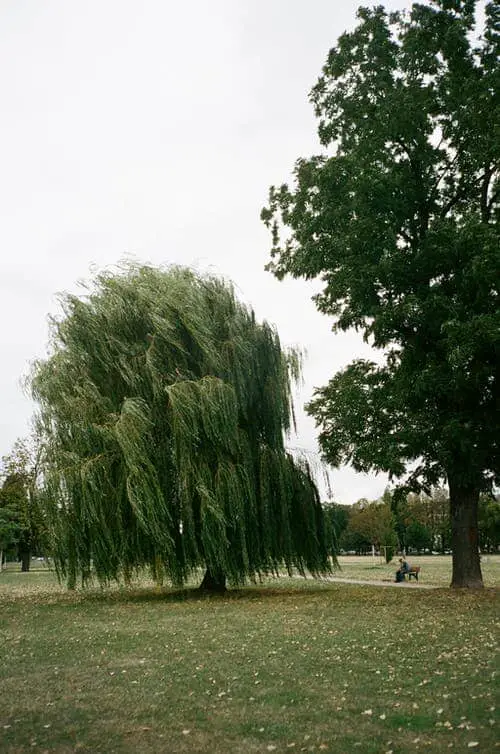Horticulturists and Environmentalists used to call “Phytoremediation” a Blessing of God! Phytoremediation is a combination of two words: “Phyto” means “Plants” and “re-medium” means “restoring balance.”
Phytoremediation is the process of using the natural potential of plants to remove contaminants from soil or water. These are special kinds of plants often called “Hyper accumulators” because they have the ability to store high concentrations of organic chemicals, nutrients (ammonia, phosphate, nitrate), as well as heavy metals (lead, cadmium, mercury, zinc, arsenic, etc.) without showing any toxic effect on their growth and development.
Nobody was aware of hyperaccumulator plants before the 20th century. At the beginning of the 21st century, people started using these plants as indicators for mining. With the increase in research and technology, the real value of phytoextractors has been recognized.
Table of Contents
Applications of Phytoremediation
Many countries are struggling to discover how to maximize the number of ways that plants could be used to control the prevailing water and soil pollution.
Below are some of the more typical ways that these plants are being used:
- Restoration of dumped/abandoned metals at mining plants to avoid their discharge in soil, water, or air.
- Revegetation of bare soils (especially those that are severely affected due to excessive heavy metal concentrations).
- Phytoremediation has been used as an economical way to prevent soil erosion which is a global issue.
- Hyper accumulators are under study in almost each and every tissue culture and biotechnology lab in the world. The genes in them are either studied to improve them or to transfer them to certain other plants.
Metal hyperaccumulator plants were first used as indicators for mining. They are able to translocate and absorb the contaminants, which is why they are used as “sub-surface contaminants sensors.”

Types of Phytoremediation:
Phytoextraction
It involves the uptake of contaminants and accumulation in leaves, stems, or aboveground parts of the plant. Phytoextraction is of two types: continuous or induced. In Continuous phytoextraction, the plants will slowly accumulate contaminants, to then be harvested and burned, with the ashes sold as “high-grade nutrient fertilizers (zinc ore or sphalerite or zinc blend). On the other hand, in induced phytoremediation, certain chemicals are applied to increase the bioavailability of metals and contaminants to intensify their uptake.
Alpine pennycress: This plant has an outstanding ability to accumulate zinc, nickel, and cadmium but mostly zinc. Alpine pennycress is found to store almost 30,000ppm of zinc in its leaves and stem. It is then harvested, and the ashes are sold as zinc ore.
Berkheya coddii: is another hyperaccumulator, which stores up to 3.8% of nickel in its stem and leaves. It is widely grown and has applications in the remediation of nickel-affected soil and water.
Zea mays(Corn):is found to be efficient in absorbing lead. Lead contaminated soils and water are first treated with 10 mmol kg-1 of EDTA (Ethylene diamine tetra-acetic acid) to increase this corn plant’s uptake efficiency up to 1.6% of shoot dry mass.
The only problem with hyperaccumulator plants is their slow growth rate. Although 4000 species of plants have been found to have the ability to accumulate metals and organic chemicals, for the most part, one plant can store only a single specific metal element. Nowadays, plant growth regulators are used to increase their growth.
Phytostabilization
Phyto-stabilization helps to prevent the movement of contaminants (either in soil or water) from one place to another in three ways:
- Through plant’s root system and low growing vegetation that holds the contaminants in place, preventing mechanical transportation.
- Trees transpire large quantities of water (more than 15 gals/day), the pumping action of plants stops the migration of contaminants in the water table.
- Plants and microbes are combined to transform the contaminants into a non-available form, such as metal precipitation on roots.
Phytostabilizers have been widely used in the revegetation of mine tailings. Mine tailing is the waste from mining that is very toxic. Some of the most effective metal tolerant varieties of grasses are mentioned below:
Fescuta Rubra: commonly known as creeping red fescue, is a grass tolerant to varied climates and habitats as well as high concentrations of heavy metals. Sequestration efficiency of hyper-accumulators is increased by arbuscular mycorrhizal fungi (AMF). It colonizes in the grass roots and secretes glycoprotein “Glomalin” to alter the contaminant’s chemical state. For example, Cu (III) can be converted into a much less toxic form, i.e., Cu (VI), by enzymes found in the exudates of microbes.
Rhizofiltration
Classified under the umbrella of phytostabilization, Rhizofilteration uses the extensive root system of plants for contaminant filtration. For example, “Helianthus annuus” were used in a pond near a Cherbonyl; within one week, these sunflowers hyper accumulated several thousand times of cesium and strontium.
Agrostis tenuis (Colonial Bent grass): A.tenuis is tolerant of lead, copper, arsenic, and zinc. According to a study by Porter and Peterson (1975), a single bentgrass plant can hyper accumulate 150-1100mg As/g of dry mass. It is often planted near mining sites, sewage wastewater cleaning plants for the revegetation of bare soils.
Phytovolatilization
In phytovolatilization, plants absorb the contaminants, convert them into volatile form, and released it into the atmosphere. The use of plants in the removal of gaseous pollutants from soil and water is a common practice first started in China. Mercury is the primary metal that this process has been used for. On the other hand, selenium, arsenic, methyl tert-butyl ether, and trichloroethylene are also removed by plants.
Indian mustard: Commercially planted around oil wells, power plants, and mining operations, for selenium removal, the plant takes selenium and converts it into dimethyl selenide and releases it into the atmosphere.
Hybrid Poplar tree: This tree is extensively planted for trichloroethylene volatilization into chlorinated acetates and carbon dioxide. Most of the hyperaccumulators are slow-growing plants, but poplar trees are fast-growing and have extensive root systems. That is why they are often chosen for phytoremediation. They will uptake heavy metals, chlorinated compounds, and other toxic chemicals.
Tulip tree: The tulip tree can convert mercury into a volatile form that is methyl mercuryand release it into the atmosphere from affected soil or water resources. A bacteria called Escherichia coli’s genes were inserted into the plant to improve its phytovolatilization ability through genetic engineering techniques.

Photodegradation/Phytotransformation
Scientists use the term “Green Liver” for the process of phytotransformation because the plant act as human liver, i.e., it uptakes the contaminants, alters their polarity with the help of enzymes, and releases them back into the soil.
It is the breakdown or degradation of pollutants in two ways:
Absorption / Uptake:
- If plants uptake the pollutants to degrade them, it will be accomplished through the use of enzymes. For example, oxygenase nitroreductase is an enzyme present in tissues and root exudates, which plants use to breakdown certain organics like trinitrotoluene, trichloroethylene, atrazine, etc.
No Absorption / No Uptake:
- Plants release certain enzymes via roots. These enzymes stimulate the microbes in the soil to degrade the contaminants. For example, the yellow poplar trees stimulate microbes in the soil to degrade atrazine.
Transgenic tobacco plant: “Nicotiana tabacum” is a genetically engineered trinitrotoluene (TNT) tolerant plant. A soil bacterium is known as “entereo coloca” had been discovered to contain these genes. The genes expressing the enzymes “nitroreductase and pentaerythritol tetranitrate reductase” were inserted into the tobacco plant. These enzymes are able to utilize ester explosives to meet their nitrogen requirements. N.tabacum can uptake and degrade up to 0.25% of TNT per plant, a much higher potential of phytoremediation than a wild tobacco plant.
Canary grass (Elodeia bulrush): An experiment was conducted at the Army ammunition plant in Milan to check out the potential of a canary grass to remove trinitrotoluene and RDX (hyxahydro-1, 3, 5-trinitro-1,3,5-triazine). Within one month, a removal rate of more than 90% had been realized.
The old and traditional methods of controlling TNT pollution are so much more expensive that very few of them are implemented properly. On the other hand, these plants having the natural ability to store high concentrations of toxic contaminants without showing adverse effects on their growth, are now widely used by TNT handlers. Phytodegradation is not only effective in reducing contaminant levels in the soil but also improves the soil’s physical and chemical composition. Degradation activities and bio-stimulation of bacteria in the soil improves the nutrient levels of bare soils, reclaims acidic soils, and is cost-effective as compared to other reclamation methods.

A collective list of plants having phytoremediation properties:
Trees: mainly for organic as well as inorganic metal’s removal.
- Willow,
- Yellow poplar,
- Poplar tree,
- Gum tree etc.
- Bamboo
- Hemp tree (Cannabis sativa)
- Hibiscus (Hibiscus cannabinus)
Brassicaceae family: mainly for inorganics removal.
- Brassica juncea
- Allysum (Allysum alyssoides)
- Thlaspi (Thlaspi arvense)
Grasses: for organic contaminants removal.
- Buffalo grass (Boutaloua dactyloides)
- Red fescue (Fescuta rubra)
- Cattail
- Reed (Calamagrostis)
- Parrot feather
- Spartina
- Salicornia
- Water Hyacinthus
- Pennyworth
- Duckweed
Summary
Atomic weapons manufacturing plants, research laboratories, experimental sites, chemical manufacturing industries, dyeing factories, and the untreated wastewater of industries dealing with heavy metals, Chernobyl, etc., are the places where contaminants are prepared and released to pollute the non-polluted soil and water. Heavy metal pollution is a burning issue for every country in the 21st century. The use of plants to remove or minimize heavy metals and organic and inorganic compounds is the most reliable and environmentally friendly method know to man. I find it ironic that plants, which man has been abusing, and decimating for centuries, might just turn out to be our saviors!
References
Greipsson, S. (2011). Phytoremediation. Nature Education Knowledge 3 (10): 7 http://www. nature. com/suitable/knowledge/library/phytoremediation-… 1 of 5 1/1/2015 11: 41 PM. Figure 2, 2.
Limmer, M., & Burken, J. (2016). Phytovolatilization of organic contaminants. Environmental science & technology, 50(13), 6632-6643.
Guarino, F., Miranda, A., Castiglione, S., & Cicatelli, A. (2020). Arsenic phytovolatilization and epigenetic modifications in Arundo donax L. assisted by a PGPR consortium. Chemosphere, 251, 126310.
Shackira, A. M., & Puthur, J. T. (2019). Phytostabilization of heavy metals: Understanding of principles and practices. In Plant-metal interactions (pp. 263-282). Springer, Cham.
Galal, T. M., Gharib, F. A., Ghazi, S. M., & Mansour, K. H. (2017). Phytostabilization of heavy metals by the emergent macrophyte Vossia cuspidata (Roxb.) Griff.: a phytoremediation approach. International journal of phytoremediation, 19(11), 992-999.
Yang, S., Liang, S., Yi, L., Xu, B., Cao, J., Guo, Y., & Zhou, Y. (2014). Heavy metal accumulation and phytostabilization potential of dominant plant species growing on manganese mine tailings. Frontiers of Environmental Science & Engineering, 8(3), 394-404.
Muthusaravanan, S., Sivarajasekar, N., Vivek, J. S., Paramasivan, T., Naushad, M., Prakashmaran, J., … & Al-Duaij, O. K. (2018). Phytoremediation of heavy metals: mechanisms, methods, and enhancements. Environmental chemistry letters, 16(4), 1339-1359.
Ahmadpour, P., Ahmadpour, F., Mahmud, T. M. M., Abdu, A., Soleimani, M., & Tayefeh, F. H. (2012). Phytoremediation of heavy metals: A green technology. African Journal of Biotechnology, 11(76), 14036-14043.
Park, S., Kim, K. S., Kim, J. T., Kang, D., & Sung, K. (2011). Effects of humic acid on phytodegradation of petroleum hydrocarbons in soil simultaneously contaminated with heavy metals. Journal of environmental sciences, 23(12), 2034-2041.

